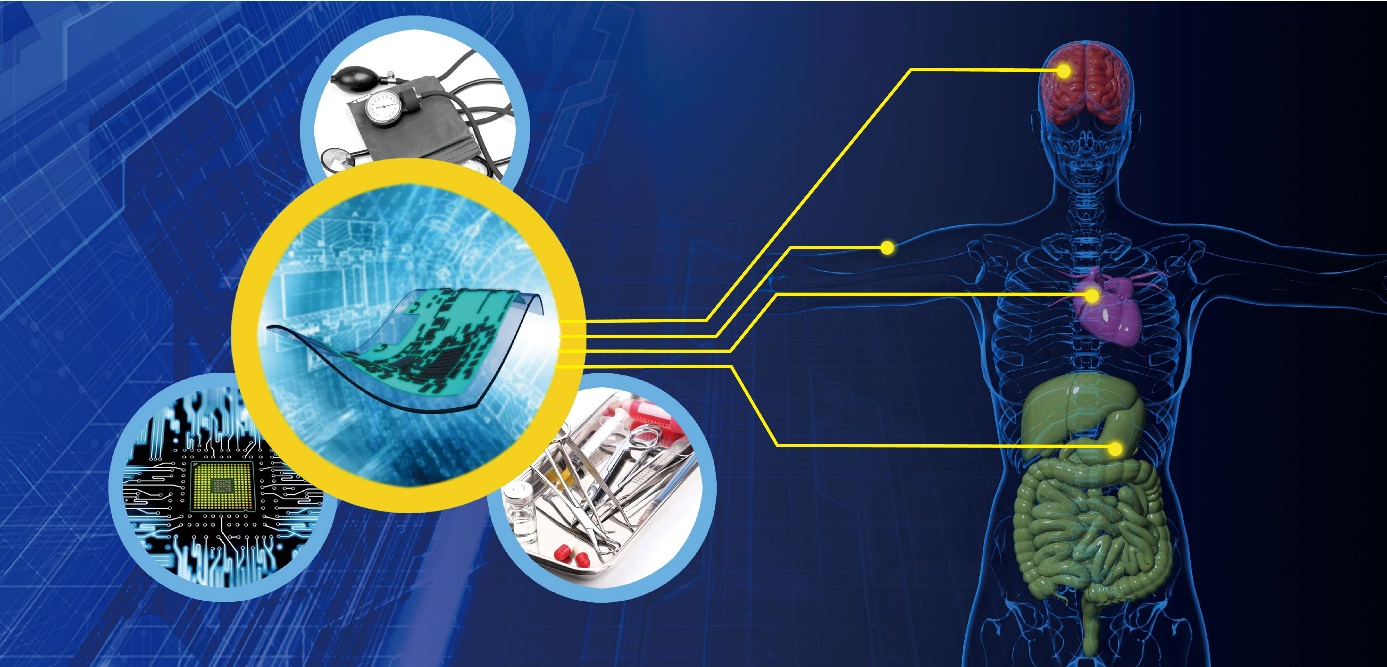Bioelectronics is revolutionizing healthcare by merging electronics and biology. Devices that interface directly with the human body have the potential to treat many medical conditions in novel ways. Here’s a closer look at the exciting field of bioelectronics and what it may mean for the future of medicine.
What is Bioelectronics?
Bioelectronics refers to technologies that incorporate biological components with electronic components to interact with living systems. The goal is to monitor and modulate biological processes through engineered interfaces between biosystems and non-biological electronics.
Some key characteristics of bioelectronic devices include:
Interfacing electronics directly with neurons, tissues or organs in the body rather than externally. This allows for precise targeting of biological systems.
Sensing biological signals and transmitting data wirelessly. Biosensors can detect biochemical markers, nerve impulses or muscle contractions.
Stimulating biological pathways through targeted electrical or chemical signals. This enables tools for modulating biology like pacemakers do for the heart.
Miniaturized, implanted devices that are invisible to users once in place and require no external components over time. They aim to seamlessly integrate electronics with the body.
Bioelectronic brings together experts in biomedical engineering, nanotechnology, material science, neuroscience and more to develop technologies at the interface of living and non-living systems. The result could transform how we treat and even enhance human capabilities.
Potential Applications
The potential applications of bioelectronics span many medical conditions by offering new treatment avenues. Here are some promising areas bioelectronics is pursuing:
Mental Health
Researchers are developing bioelectronic devices for depression, PTSD and other mental health issues that stimulate targeted neural pathways to ease symptoms. Clinical trials look promising so far.
Neurological Disorders
Implants are in development for epilepsy, Alzheimer’s, Parkinson’s and more by interfacing electronics directly with the brain or peripheral nervous system. Some aim to restore lost neural connections.
Metabolic Diseases
Biosensors constantly monitor blood glucose in diabetes. New technologies may selectively stimulate insulin production or absorption in response to readings.
Immunology
Bioelectronic devices could help modulate overactive immune responses as seen in autoimmune diseases like rheumatoid arthritis through stimulation of vagus nerve signaling pathways known to impact inflammation.
Chronic Pain
Targeted nerve stimulation through bioelectronics provides an alternative to opioids for chronic pain conditions. Implants are in trials for back pain and others with success in reducing pain signals.
Advancing Human Performance
The line between treatment and enhancement is blurry with bioelectronics. Neural implants aim to enhance functions like memory or skills through precision brain stimulation over time.
These are just a few of the promising areas. As technologies progress, the scope of bioelectronics applications will likely expand into new territories to potentially benefit many more people.
Design Challenges
While bioelectronics presents unlimited potential, developing reliable implantable devices that seamlessly interface with living tissue poses major technical challenges:
Biocompatibility
Materials must be finely tuned to avoid rejection by the body, integration with tissues without disruption and long-term stabilitysubmerged in biofluids. Even minor imperfections could lead to issues.
Miniaturization
Components need to be significantly smaller than current electronics to interface on microscopic scales within the body without causing harm or rejection. Novel nanofabrication methods are beingexplored.
Power
Implants require energy but cannot tether to external batteries, so they must harvest, store and efficiently use incredibly small amounts of energy, perhaps scavenging from biomechanical activity or other novel energy sources.
Data Transmission
Devices need reliable wireless data transmission in and out of the body through layers of tissue without interference. Near-field communication and novel wireless power designs are hurdles.
Integration with Biology
Understanding how to precisely interface electronics with neurons, organs or other living tissues on a molecular level and develop bioelectronics that seamlessly assimilate within complex biological systems remains a grand challenge.
While issues remain, the field is making steady progress through rapid innovation and interdisciplinary collaboration. With continued advancement, bioelectronics implants of the future aim to be fully autonomous, invisible to users and capable of maintaining health at the system level through real-time physiological regulation.
Potential for Disease Disruption
If the technical challenges can be overcome, bioelectronics has the potential to radically disrupt how we prevent and treat disease. Some possible future scenarios:
Continuous multi-organ biosensors that identify health issues long before symptoms arise by constantly monitoring biological signals at the systemic level and wirelessly transmitting data to healthcare providers.
Networked bioelectronic implants that work together to precisely restore normal functioning across interacting biological systems. For example, diabetes may be managed through real-time coordinated modulation of insulin, glucagon and other pathways by different miniaturized devices.
On-demand drug delivery through triggerable bioelectronic mechanisms that only release pharmaceutical payloads when and where needed based on sensor readings rather than scheduled doses. This could enhance efficacy while reducing side effects.
Routine “biological upgrades” through iterative non-invasive bioelectronic enhancement of targeted functions to extend healthspans. For example, periodically improving cardiac function or aerobic capacity over a lifetime.
Addressing currently untreatable conditions where the specific disease mechanisms are unclear through broad physiological monitoring and regulation rather than targeted pharmaceutical interventions. Diseases of aging may be top candidates.
With continued advancement, bioelectronics has the promise to revolutionize prevention, treatment and patient outcomes in healthcare. By seamlessly interacting with our biology, this emerging field could allow unprecedented precision and capabilities in managing human health and performance. Though challenges remain, the future potential of bioelectronics is nearly unlimited.
*Note:
1. Source: Coherent Market Insights, Public sources, Desk research
2. We have leveraged AI tools to mine information and compile it




